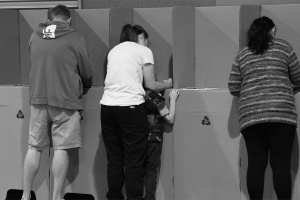Australia’s target of a 26 to 28 per cent reduction in greenhouse gas emissions below 2005 levels by 2030 remains unchanged, but the Paris climate deal will put pressure on the Government to do more.
By Francis Keany (ABC News)
The Federal Government has championed the climate change deal struck in Paris overnight, which will seek to limit an increase in global temperatures to “well below” 2 degrees Celsius.
There is also an aspirational goal of 1.5 degrees Celsius.
Australia’s target of a 26 to 28 per cent reduction in greenhouse gas emissions below 2005 levels by 2030 remains unchanged, but the Paris agreement will put pressure on the Government to do more.
Reviews of reduction targets
The deal puts in place mechanisms to review reduction targets every five years starting from 2020, which will include Australia.
Each stocktake will have to result in a more ambitious target.
Foreign Minister Julie Bishop conceded that would be a challenge for the Government, but that the deal would provide further “flexibility” to do more on climate change.
“Of course if we’re being ambitious over time we will need to work even harder,” Ms Bishop told reporters in Paris after the signing of the deal.
“But we don’t want to damage our economy without having an environmental impact.”
Australia is also one of the world’s highest per capita emitters.
The regular review is likely to cause concern within elements of the Coalition partyroom, which agreed on a 26 to 28 per cent target earlier this year.
Liberal MP Dennis Jensen told reporters in early December he did not want the target to be toughened, even if a review was carried out.

Emissions Reduction Fund or Emissions Trading Scheme?
Environment Minister Greg Hunt said the Emissions Reduction Fund (ERF), originally known as the Direct Action plan, was the best way for Australia to “meet and beat” its obligations.
It is known as a “reverse auction”, where the Government pays for proposals put forward by companies to reduce their emissions.
The Federal Opposition said a floating carbon price was the way to go, such as an Emissions Trading Scheme (ETS), which would penalise companies for their emissions.
Labor has promised to take an ETS to the next federal election, despite claims from the Government it is a return to the Gillard government’s controversial carbon tax and will impact on household budgets.
The Government argues its program is an effective tool to reduce pollution without impacting on the economy.
But several economists and environmental groups warn the ERF, along with other measures from the Government, will not be enough to meet Australia’s obligations.
Future of coal under the spotlight
Environmental groups say Australia can help reduce global emissions by putting a freeze on any new coal mines and gradually phasing out the use of coal-fired power stations.
There is an increased focus on one proposed mine in particular — the Carmichael project in Central Queensland — which is at the centre of a major legal dispute.
A report by The Australia Institute warns the $16 billion project by the Indian giant Adani will generate more annual emissions than Bangladesh or New York City.
There are also concerns about the emissions from the brown coal-fired power station at Hazelwood in Victoria’s Latrobe valley.
The Government said it remained committed to coal and the jobs it sustains, and that coal-fired energy was still essential for developing nations.
Climate financing for the future
Another key aspect of the Paris talks has been a proposed $US100 billion fund for developed nations to help developing nations make the shift to green energy.
It would also be used to build up defences against rising sea levels, storms and droughts.
Australia has pledged $1 billion to the Green Climate Fund run by the United Nations, funded out of the foreign aid budget, with a focus on Pacific Island nations.
The Climate Institute argues that figure should be closer to $2.5 billion which is what Canada has committed.
This article was originally published in ABC News.




